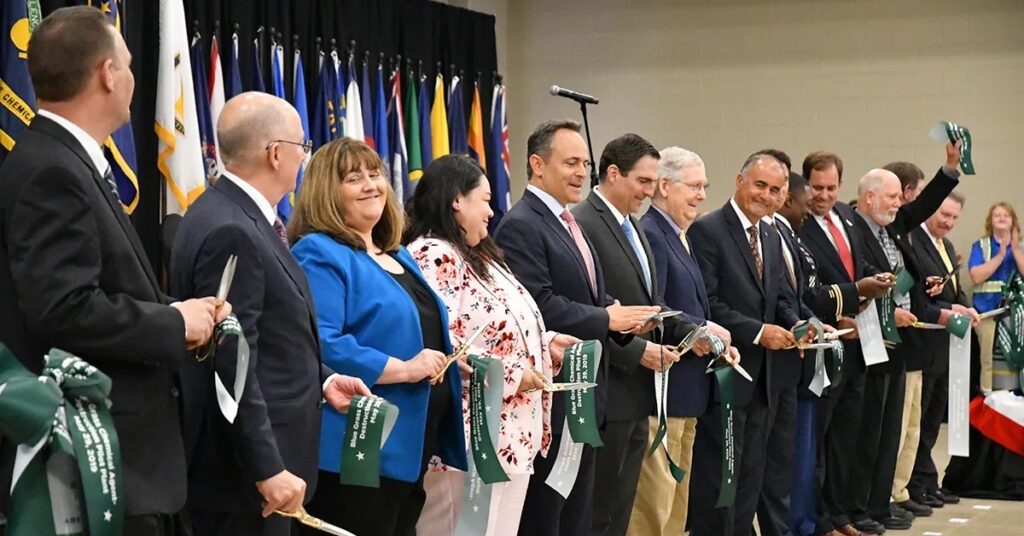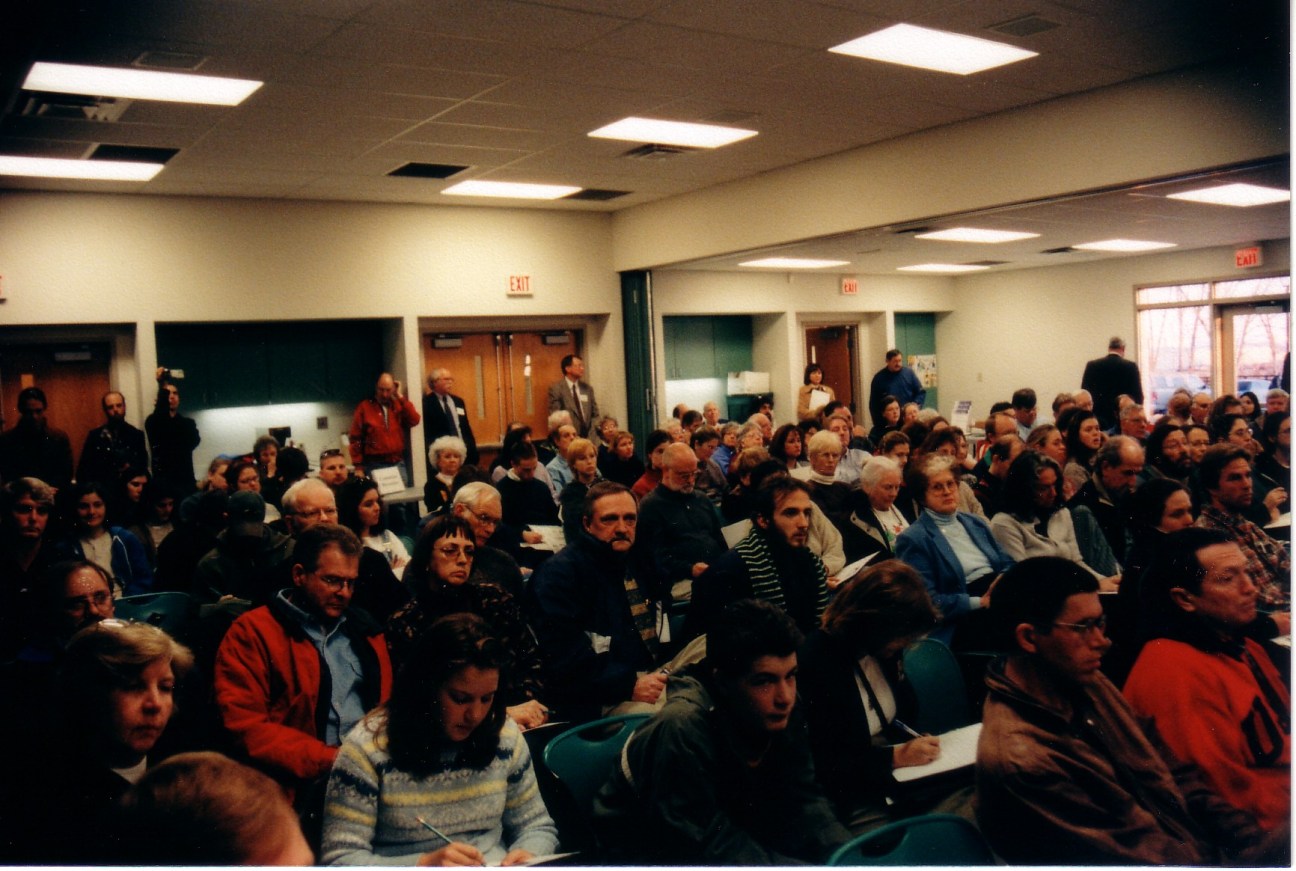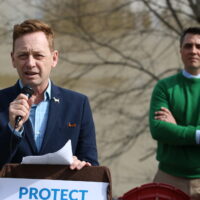In 1984, the U.S. military announced that an international treaty committed them to destroying all of the country’s stored chemical weapons. This is how many citizens of Madison County, Kentucky, home of the Bluegrass Army Depot, first learned that more than 500 tons of nerve agents were stored in their community.
These are lethal compounds; just one drop of VX gas on a man’s hand will kill him in less than three minutes. The army planned to either incinerate them, releasing gasses with unknown toxicity levels and composition, or transport them somewhere else. Citizens were concerned that the incineration process would have serious impacts on the county’s 90,000 residents, especially at the middle school less than two miles from the depot.

That concern ignited a grassroots movement that’s persisted for nearly three decades. In this David and Goliath story, everyday people spoke up and worked with the Pentagon and elected government officials of both parties. Their fight set forth a new standard of chemical weapon disposal whose effects rippled around the world and are finally coming to fruition in their own Appalachian community.
A global, collaborative strategy
Even grassroots efforts need leadership, and Madison County resident Craig Williams has spent most of his adult life on this coalition-building work. A Vietnam veteran, he has become an international expert on chemical weapons and testified at the Hague, home of the United Nations’ International Court of Justice and the International Criminal Court. The 2006 winner of the prestigious Goldman Environmental Prize, he is also a grandfather and beloved soccer coach.
Williams and other leaders framed this movement in terms of the health impacts of incineration and the right of community self-determination. Their big tent had room for everyone who cared about this issue, and groups as diverse as the Kentucky Medical Association, local real estate agents, colleges, and members of the multimillion-dollar Kentucky horse industry joined the cause.
“We all care about the place we live,” said Williams in an interview with the Daily Yonder.

Leaders knew protesting wasn’t enough. Legislative work began with advocating for passage of a state statute with strict permitting requirements. On a national level, Williams nurtured a strong working relationship with Senator Mitch McConnell.
“My number one rule is to always know what I am talking about,” said Williams. “That is why McConnell works with me, an ex-hippie. I am 100% accurate and he has confidence in me on this issue. We work hand in hand.”
The group rejected a NIMBY or “not in my backyard” strategy in lieu of NOPE — “Not On Planet Earth.” It was more than a philosophical approach; practically, they knew they weren’t going to win by themselves. They networked with citizens near the other seven American storage sites — in Oregon, Colorado, Indiana, Arkansas, Maryland, Alabama, and Utah — and representatives from Russia to form the Chemical Weapons Working Group.
“Remoteness is a state of mind,” said Williams about the rural location of many of the sites. “The disposition of chemical weapons is a world problem. They shouldn’t be in anyone’s backyard.”
Strategically, Kentucky leaders knew it was up to them to find a different solution. They hired scientists to study both the detrimental effects of incineration and the possibilities of alternative methods of disposal. The frontrunner turned out to be a chemical neutralization process, where the nerve agents are put into liquids instead of released as vapors. While not perfect, it has a much greater level of safety.
Widespread acceptance of this alternative process was transformative. The Pentagon began seeing the citizens as partners instead of adversaries. “Once we got everyone rowing in the same direction, there was a metamorphosis of the ‘us versus them’ scenario we were locked in for 16 years,” said Williams.
Going Global
Madison County’s movement went international when representatives from Russia participated in the first Chemical Weapons Working Group meeting. The working group then sent a delegation of 14 Americans to Russia. They wrote an international statement and unanimously committed to work together to find better methods of chemical weapons disposal. The Americans were heartened by stories of 5,000 Russian demonstrators who constructed a tent city to protest the first government incineration. Williams and other leaders met with the Russian government, and soon after the visit the Russian government decided on a system of chemical neutralization.
Making progress, and history
One crucial commitment Williams and the Kentucky group made was to maintain their advocacy work even after the new disposal process was adopted. As a citizen’s watchdog group, they noticed the military pulled the funding after a couple of years and worked with their senators to restore it. The Blue Grass Chemical Agent-Destruction Pilot Plant began construction in 2012 and has now neutralized four of the five types of weapons stored there.

Williams says he is still engaged on an almost daily basis with the Army, the contractor, Congress, the Pentagon, the governor’s commission and local citizens. As questions arise of how to utilize the workers and the infrastructure when the project is complete, a spirit of cooperation still prevails.
Beyond working to increase safety for their own county and empowering other affected locations, Williams said their work also set a new paradigm of community engagement for the military. “From an analytical standpoint, they realized they are better off engaging people on the front end rather than fighting them part way through,” he said.
Williams shares that soon, possibly 2023, the decontamination efforts at the Bluegrass Army Depot will finally be complete. Williams looks forward the citizen’s advisory group completing one final task. Taking some of the decontaminated weapon housings, they will commission a sculpture and place on it a commemorative plaque.
It will read: “On this day, the last chemical weapon in the United States was destroyed safely in Madison County, Kentucky.”
Rural Exposure
According to the U.S. Centers for Disease Control and Prevention, disposal of chemical weapons was necessary at eight stockpiles across the continental United States. Two of the eight resided in rural counties, one of those two being the Bluegrass site in Madison County, Kentucky, along with a second in Oregon. Another four were located in small metropolitan counties in Alabama, Arkansas, Colorado, and Indiana. Only two sites were in major metropolitan areas, in locations near Baltimore and Salt Lake City. Beyond the mainland, a ninth facility was located at Johnston Atoll, an unincorporated U.S. territory southwest of Hawaii.

This article first appeared on The Daily Yonder and is republished here under a Creative Commons license.
Kim Kobersmith lives in Berea, Kentucky. She has written extensively for the Daily Yonder about rural food, recreation, arts and culture, and development.






